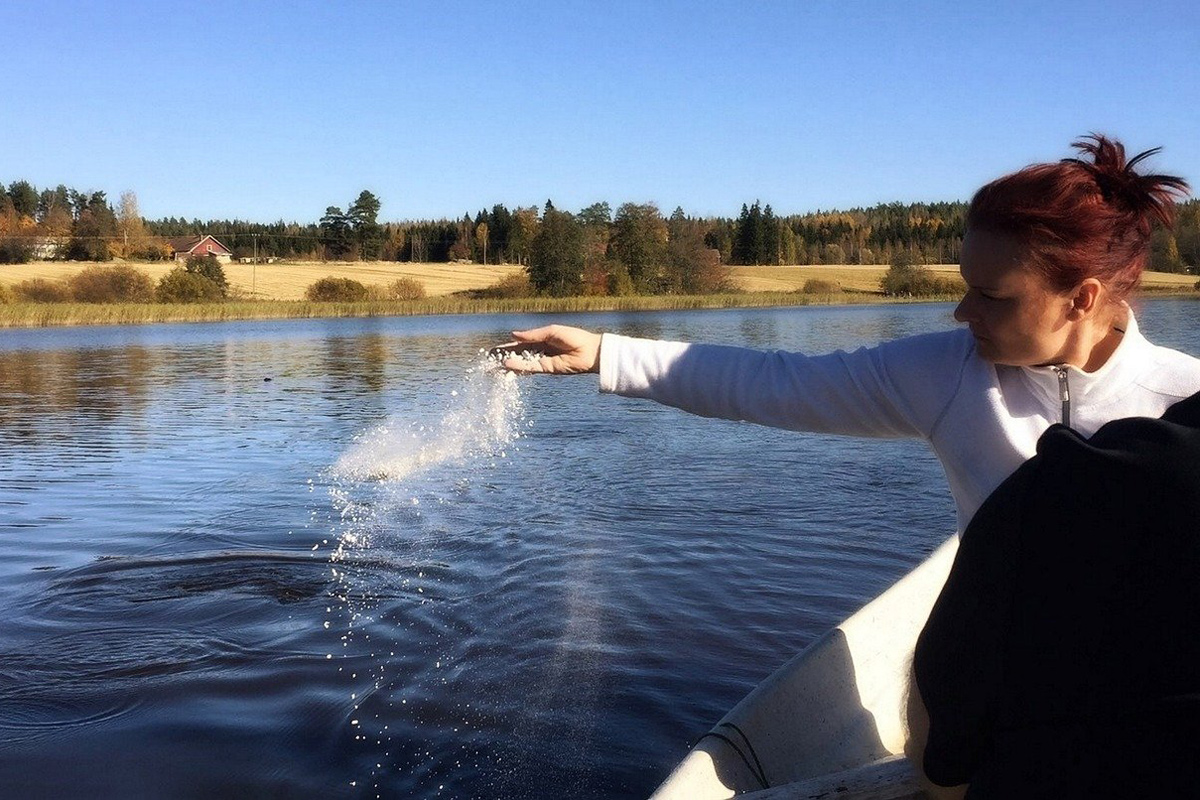In Honor of Earth Day, Consider Some Eco-Friendly Burial Options
When it comes to death and what to do with a deceased’s remains, most people think of only two options: burial or cremation. However, these options are not particularly environmentally friendly. Burial, which is arguably the worst option from an environmental standpoint, uses an estimated 100,000 tons of steel, 1.5 million tons of concrete, 77,000 trees and 4.3 million gallons of embalming fluid every year. Some of that 4.3 million gallons of carcinogenic embalming fluid likely leaks into the earth, polluting our water and soil. Cremation, often considered the greener option, is not much better. Some estimate that one cremation uses about as much gas and electricity as a 500-mile road trip and gives off around 250 pounds of carbon dioxide. If you are more environmentally minded, here are some nontraditional, ecofriendly burial ideas. An added benefit is that many of these environmentally friendly ideas are also less expensive than the traditional options.

Aquamation
Aquamation (also known as water cremation or alkaline hydrolysis) is a water-based alternative to traditional cremation. The process, which has been legalized in about twenty states, uses a solution of water and potassium hydroxide or sodium hydroxide, which is heated to approximately 350 degrees Fahrenheit. At the end of the process, only the bone matter is left, which can be dried and crushed and given to the deceased’s family to do with as they please. Desmond Tutu, the Anglican archbishop, anti-apartheid leader, and environmental advocate, requested aquamation instead of cremation by fire likely because he knew that aquamation uses an estimated 90 percent less energy than cremation by fire. After the aquamation process was complete, his ashes were interred in St. George’s Cathedral in Cape Town, South Africa.
Mushroom Burial Suit
Actor Luke Perry, probably best known for his role as Dylan McKay on the Beverly Hills, 90210 TV series, was buried in a specially made biodegradable mushroom suit after his organs were donated. While this may sound like a quirky celebrity antic, the creator of the mushroom burial suit says the mushroom spores that line this special suit are trained to consume dead human tissue. Human remains contain toxins that are released into the atmosphere during cremation or through other methods of burial. Mushrooms can absorb and purify these toxins, resulting in a cleaner earth. After breaking down human tissue, the mushrooms conduct the nutrients from the body to fungi in the soil that then pass these nutrients on to trees.
Green Burial
If being buried in a mushroom suit is not your preferred method, you may want to consider a green burial. A green burial is similar to a normal burial except no embalming fluids or toxic chemicals of any kind are used. Rather than using a gas-guzzling machine to dig the grave, the green burial ground staff—or even your loved ones themselves—dig the grave by hand. To allow the body to decompose in a natural way, no cement burial vault is used, and only caskets made from biodegradable materials, such as wicker, are used. Alternatively, the casket can be eliminated altogether, and the body can simply be buried in a cloth shroud. Many green burial grounds are used as animal and plant conservation sites.
Sea Burial
If you love the ocean, a sea burial may be perfect for you. Sea burials may be a more familiar eco-friendly option, as this method has been used for centuries by Vikings, pirates, and sailors. Today, sea burials may take the form of using a water-soluble urn or submerging a modified casket down to the ocean floor. More environmentally conscious sea burials may use natural burial shrouds or mix the person’s ashes with an eco-friendly concrete that is used to construct artificial reefs that foster aquatic life.
Recomposition
Recomposition, or body composting, is the process of converting human bodies into soil using natural means. The body is placed in a container with a mixture of wood chips, straw, and other organic materials that are then exposed to heat and oxygen to accelerate the decaying process. After about thirty days, the remains decompose into about a cubic yard of soil, which your loved ones can use in their gardens. Unfortunately, if you want to return to Mother Earth in this way, body composting is currently legal in only three states: Colorado, Oregon, and Washington. However, more states are considering legalizing the process, and body composting may soon gain in popularity.
What You Can Do to Be Prepared
Making burial decisions after your passing can be an emotionally stressful experience for your family members who are left behind. These nontraditional methods may not be the first thing your family considers, so if you want your remains disposed of in a more environmentally friendly way, it is important to have an experienced attorney prepare your estate plan and make this preference known in your plan. We can help you create a comprehensive burial plan in advance that will reduce emotional stress for your grieving family members at the time of your death.
Ocean Estate Law
Jennifer Elliott, Attorney at Law
Jennifer Elliott, Attorney at Law is an estate planning and probate lawyer located in San Clemente and Laguna Hills. The firm, Ocean Estate Law, provides probate services for decedent's estates in Orange County and San Bernardino County as well as estate planning to clients throughout California.